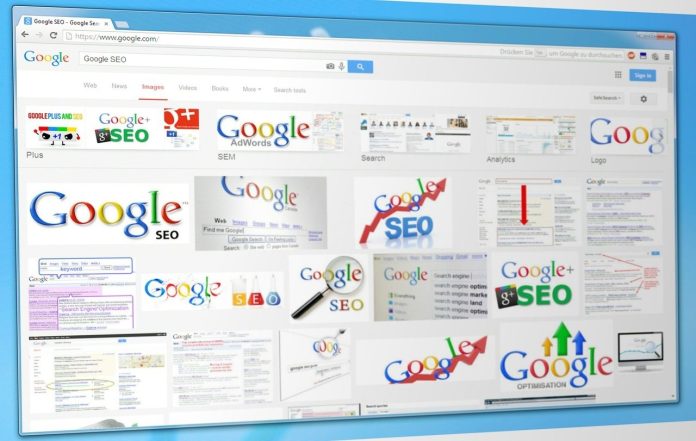If you are new to online marketing and have been considering ways to promote your business digitally, Google Ads is arguably one of the most powerful and effective platforms you can use. As of 2025, Google processes over 8 billion searches per day worldwide, which means billions of opportunities exist for your business to connect with potential customers at the very moment they express interest in your product or service. Google Ads, formerly known as Google AdWords, enables advertisers like you to place targeted ads on Google search results, partner websites, YouTube, and beyond, ensuring your message reaches the right audience in the right place at the right time.
However, despite its tremendous potential, Google Ads can seem intimidating, especially if you’ve never run paid campaigns before. The platform is feature-rich, filled with specialized terms, and requires strategic planning to avoid wasting money on ineffective ads. Many beginners make common mistakes, such as poor targeting, irrelevant keywords, or ineffective ad cop,y that lead to low click-through rates and high costs. That’s why it’s essential to understand how Google Ads works, how to set it up properly, and how to optimize campaigns continually for the best results.
Understand How Google Ads Works

Before diving into the platform, it’s important to understand the basic mechanics of Google Ads. At its core, Google Ads operates on a pay-per-click (PPC) advertising model, which means that you only pay when someone clicks on your ad, not when it’s shown. This system allows advertisers to efficiently allocate their budgets toward actual user interest and engagement, rather than simply impressions or views.
Google Ads can display your ads on several different channels, each suited for different marketing objectives. The most popular placement is on Google Search Network, where your ads appear alongside organic search results when users search for keywords relevant to your business. For example, if you sell running shoes, your ad might appear when someone types “best running shoes for beginners” into Google.
Apart from the search network, Google Ads can also display ads on the Display Network, a vast collection of websites, apps, and videos that partner with Google to show ads. Display ads typically come in the form of banners or rich media and are useful for building brand awareness or remarketing campaigns.
Additionally, Google Ads supports video ads on YouTube, which is the second-largest search engine globally, offering huge potential for visual storytelling and engagement. There are also Shopping ads, where product images and prices appear directly on search results, ideal for e-commerce businesses.
Every time someone conducts a search or visits a website where your ad can appear, Google runs an auction to decide which ads to show and in what order. Your ad’s placement depends not just on your bid — the maximum amount you’re willing to pay per click — but also on your Ad Rank. Ad Rank is a composite score that considers your bid amount, the quality and relevance of your ad, the expected click-through rate (CTR), and the landing page experience you provide.
Understanding these basics helps you appreciate why simply setting the highest bid isn’t enough; creating high-quality, relevant ads that meet users’ needs is just as crucial for success.
Create a Google Ads Account
The first practical step is to create your Google Ads account. Head over to ads.google.com and click on the “Start Now” button. You will be prompted to log in with your existing Google account or create a new one if you don’t have any.
Once logged in, you’ll be asked to provide some basic information such as your country, time zone, and billing details. It’s essential to select the correct time zone, as it impacts when your ads run and how your reports are generated. Billing options vary by country but generally include credit/debit card payments or bank transfers.
If you plan to manage multiple campaigns or accounts, Google Ads also integrates with Google Analytics and Google Tag Manager, powerful tools for tracking and analyzing user behavior beyond the clicks.
Though setting up an account is straightforward, it lays the foundation for your advertising efforts, so ensure your information is accurate and your account is properly linked to any relevant websites or platforms you use.
Define Your Advertising Goals
Setting clear goals is a critical step that many beginners overlook. Google Ads asks you upfront what you want to achieve with your campaign because this helps the platform tailor recommendations and optimizations to your objectives.
Common goals include
Getting more website sales or signups: Ideal for ecommerce stores or subscription-based services.
Generating phone calls: Useful for local businesses that want direct customer inquiries.
Driving store visits: Best for physical locations like restaurants or retail shops.
Increasing brand awareness: If you’re new to the market and want to build recognition.
Defining your goal helps Google optimize your campaign accordingly. For example, if your goal is to get more sales, Google Ads will prioritize showing your ads to people most likely to convert based on their behavior patterns and historical data.
Be realistic and specific about your goals. Setting measurable targets, such as a certain number of leads or sales per month, will also help you evaluate campaign success later.
Choose Your Campaign Type
Google Ads offers several campaign types, each designed for different advertising purposes. As a beginner, understanding the options helps you select the right one for your goals.
Search campaigns: These show text ads on Google’s search results when users actively search for your keywords. They are intent-driven and often yield high conversion rates.
Display campaigns: These allow you to place visual banner ads across millions of websites in Google’s Display Network. They are ideal for reaching broader audiences and remarketing to previous visitors.
Video campaigns: Display ads before or during YouTube videos. They’re great for storytelling and raising brand awareness.
Shopping campaigns: Perfect for ecommerce stores, these ads showcase product images, prices, and your store name directly on Google search results.
App campaigns: Designed to drive app downloads and engagement.
For beginners focusing on sales or leads, Search campaigns are usually the best place to start because they connect you with users already searching for what you offer. Once you gain confidence, you can experiment with other types.
Set Your Campaign Budget and Bidding
Budgeting is one of the most intimidating parts for beginners. Google Ads requires you to set a daily budget — the average amount you’re willing to spend each day. Google will try to optimize spending to get you as many clicks or conversions as possible without exceeding your budget over a monthly period.
It’s advisable to start small. Even a budget of $5 to $10 per day can provide valuable insights and data for optimization.
Next is your bidding strategy — how much you’re willing to pay per click or conversion. Common bidding options include:
Manual CPC: You control the maximum cost you pay for each click, giving you full control but requiring more management.
Maximize clicks: Google automatically adjusts bids to get you the most clicks within your budget.
Target CPA (Cost Per Acquisition): You set a target cost per conversion, and Google optimizes bids to meet that goal.
Beginners often start with Maximize clicks or Manual CPC for more control and understanding of how the auction works before moving on to automated strategies.
Select Your Target Audience
Google Ads lets you pinpoint your ideal audience with incredible precision. You can target based on.
Geographic location: Country, state, city, or even a radius around a store.
Language: Reach users who speak your preferred languages.
Demographics: Age, gender, parental status, and household income.
Device type: Desktop, mobile, or tablet users.
This granularity ensures you’re not wasting budget on people unlikely to convert. For example, a local plumbing company should limit ads to their service area rather than nationwide.
Understanding your audience’s characteristics before you start will make targeting more effective and increase your campaign ROI.
Choose Keywords
Keywords are the foundation of your search campaigns. They determine when your ads will appear in search results.
Google provides a Keyword Planner tool that suggests keywords based on your product or service and shows search volumes and competition levels. When selecting keywords:
Use a mix of broad match (reaches a wide audience), phrase match (exact phrases with close variants), and exact match (precise queries).
Avoid very broad or generic keywords that may attract irrelevant clicks.
Use negative keywords to exclude terms that are not relevant (e.g., “free” if you don’t offer free products).
Regularly review and refine your keyword list as your campaign runs.
Write Effective Ad Copy
Your ads compete for attention, so your copy needs to be compelling, clear, and relevant.
Include these elements:
Headline: Incorporate your main keyword and make a strong promise or offer.
Description: Explain benefits and what makes your product/service unique.
Call to Action: Guide users on what to do next (“Buy Now,” “Get a Quote,” “Call Today”).
Write multiple variations to test which performs best. Strong ad copy increases CTR and quality score, lowering your CPC.
Set Up Ad Extensions
Ad extensions provide additional info and improve ad visibility. Examples include.
Sitelinks: Links to specific pages on your site.
Call Extensions: Click-to-call buttons.
Location Extensions: Your business address.
Offer Extensions: Highlight discounts or deals.
Extensions improve user experience and CTR.
Launch and Monitor Your Campaign
After reviewing all settings, launch your campaign. Use the Google Ads dashboard to track metrics like clicks, impressions, CTR, CPC, and conversions.
Set up conversion tracking to measure actions like purchases or signups accurately.
Optimize Continuously
Successful campaigns require ongoing optimization.
Pause underperforming keywords or ads.
Add negative keywords.
Test new ad copy.
Adjust bids.
Analyze which devices or demographics convert best and reallocate the budget.

